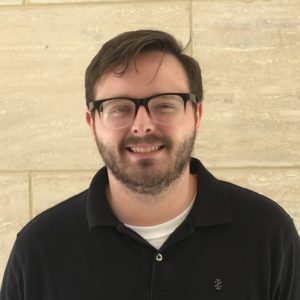by Buck Institute
November 19, 2019 . BLOG
Aging is inevitable, but let’s make it better
 By Jacob Rose, Research Associate in the Schilling lab,
By Jacob Rose, Research Associate in the Schilling lab,
and Catlyn Cavender, Dominican University graduate student
Aging is inevitable of course. But what people tend to fear more than chronological aging is the biological aspect of aging and its accompanying conditions such as neurodegeneration, cellular senescence, and diabetes that have a big impact on healthspan and quality of life. Research has shown that at the embryonic stage of life, pluripotent stem cells (cells that can develop into any type of cell) undergo a differentiation process where they branch off to form the various tissues, organs and blood vessels in the body. By the time we are born, our stem cells are more limited in their differentiation capacity, but are still able to replenish many of our tissues. As we age, however, this process becomes dysfunctional and inefficient. Researchers have designed some incredible experiments involving stem cells to help figure out the mechanisms of aging. Now researchers are trying to “reprogram” cells in order to slow or even reverse aging.
Scientists have discovered that they can take cells that have already begun aging and “reprogram” them into pluripotent cells again to reset telomere length (a driver of aging) and change which genes are turned on and off. These reprogrammed pluripotent cells also decrease levels of oxidative stress which in turn ameliorates some of the age-related declines in insulin sensitivity and wound healing ability. Modification is accomplished by making more so-called Yamanka factors – reprogramming factors - which are abundant in embryonic stem cells. By forcing cells to make extra of these factors, cells can be reversed back into the pluripotent stage, more like an embryo. It is a very delicate balance, however, because research has shown that over the long term this can lead to tumor formation.
So how do we slow aging, lessen age-related disease, and avoid tumors? In a paper published in Cell, the Belmonte lab at the Salk Institute wanted to take research on aging further in mice with progeria (a rare genetic condition that causes accelerated aging in children) to determine if in vivo (in live organisms) partial reprogramming using the Yamanka factors could slow down or even reverse the aging process and extend lifespan while completely avoiding tumor formation.
The lab bred mice so that they had genetic mutations to both age more rapidly and to make lots of Yamanaka factors in response to a specific drug. The researchers were able to show that inducing these factors in cycles of 4 days could rejuvenate cell and biological activity and avoid tumor formation. These mice had increased lifespan. They also induced the Yamanaka factors in normal aging mice and improved response to various organ stressors, especially in the skeletal system, muscles, and pancreas. This experiment showed that partial reprogramming can have significant benefits to aging organisms.
The research team was also able to successfully show these results in in vitro (in test tubes) using human iPSCs (induced pluripotent stem cells). They were able to ameliorate DNA damage and cellular senescence and upregulate “maintenance” genes that are downregulated in aging, all through partial reprogramming by temporarily turning on the Yamanaka factors.
While no one’s aging process is the same, aging happens to everyone. Results from the Belmonte lab suggest more focus on the epigenetic drivers that affect aging. Though some epigenetic factors can come from your parents, most derive from your environment, and it’s important to look at those factors as possible stepping stones to improve the process of aging. The researchers also suggest looking at those temporarily inducing Yamanaka factors more in in vivo models with normal aging organisms to better tackle aging, but also to discover a possible mechanism for how the partial reprogramming causes many of the conditions of aging to be reversed. All in all, this study adds to the field of the biology of aging, and can help lead to possible therapeutics aimed at alleviating age-related complications to improve health, quality of life, and longevity in our aging populations.

SHARE